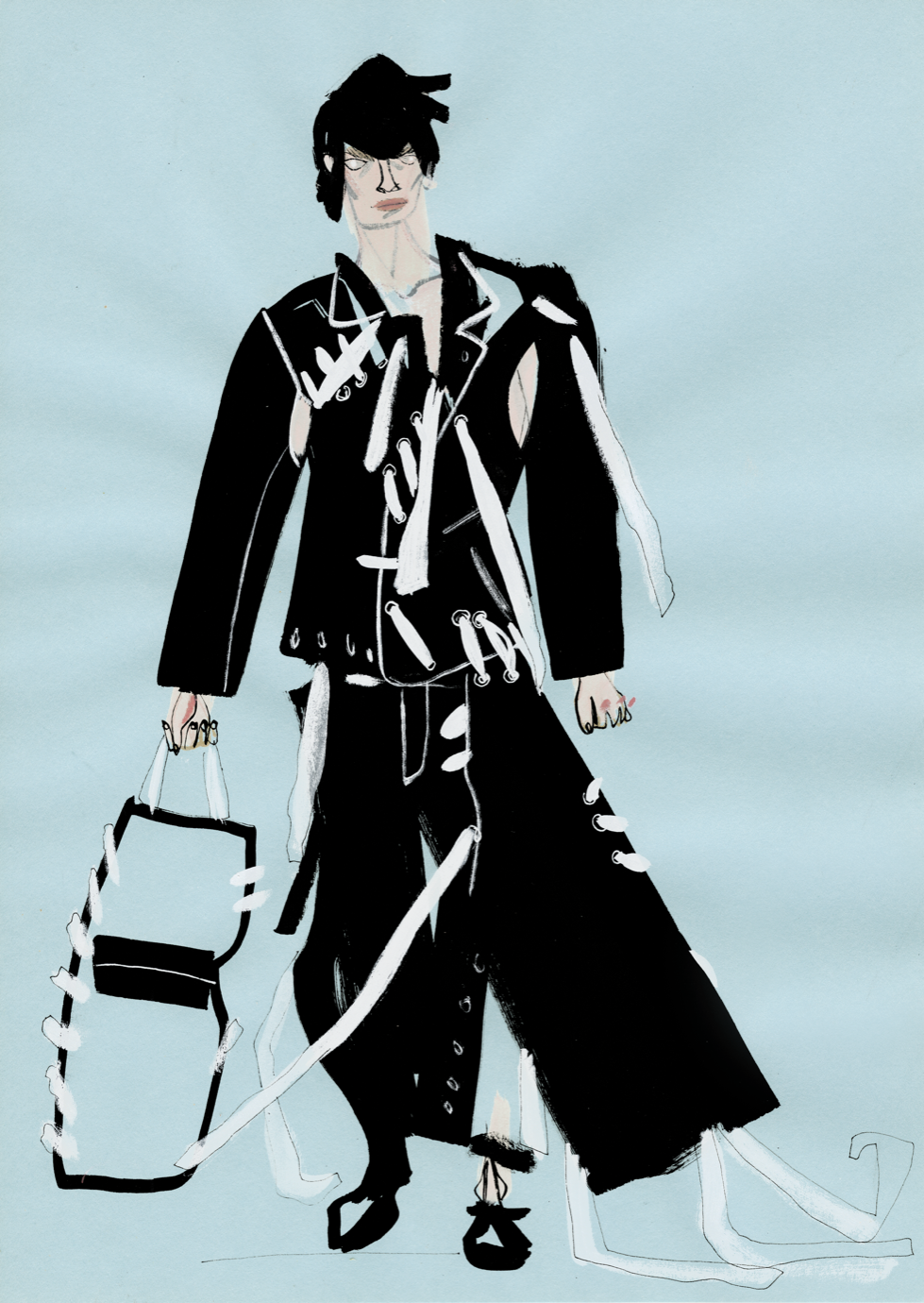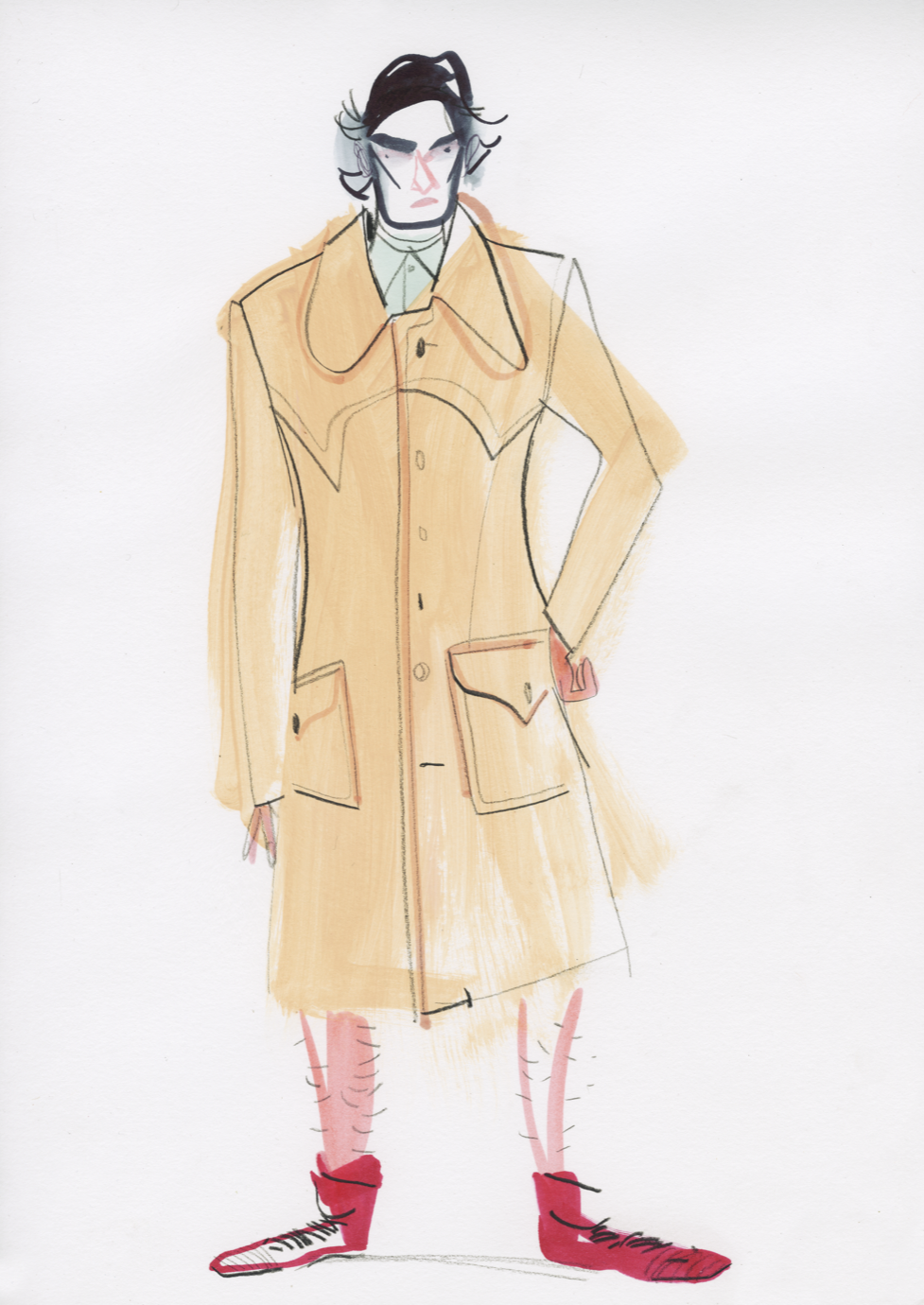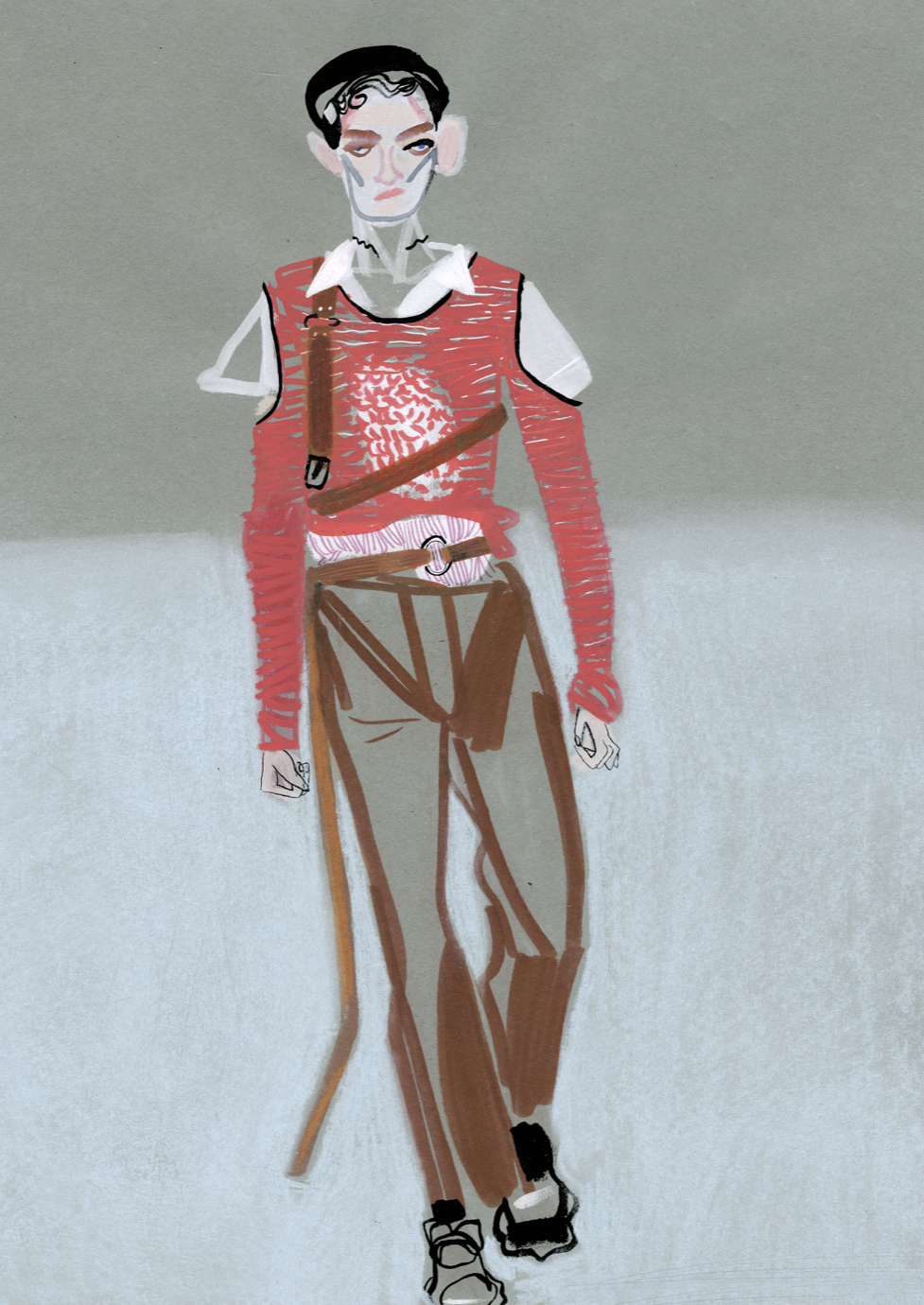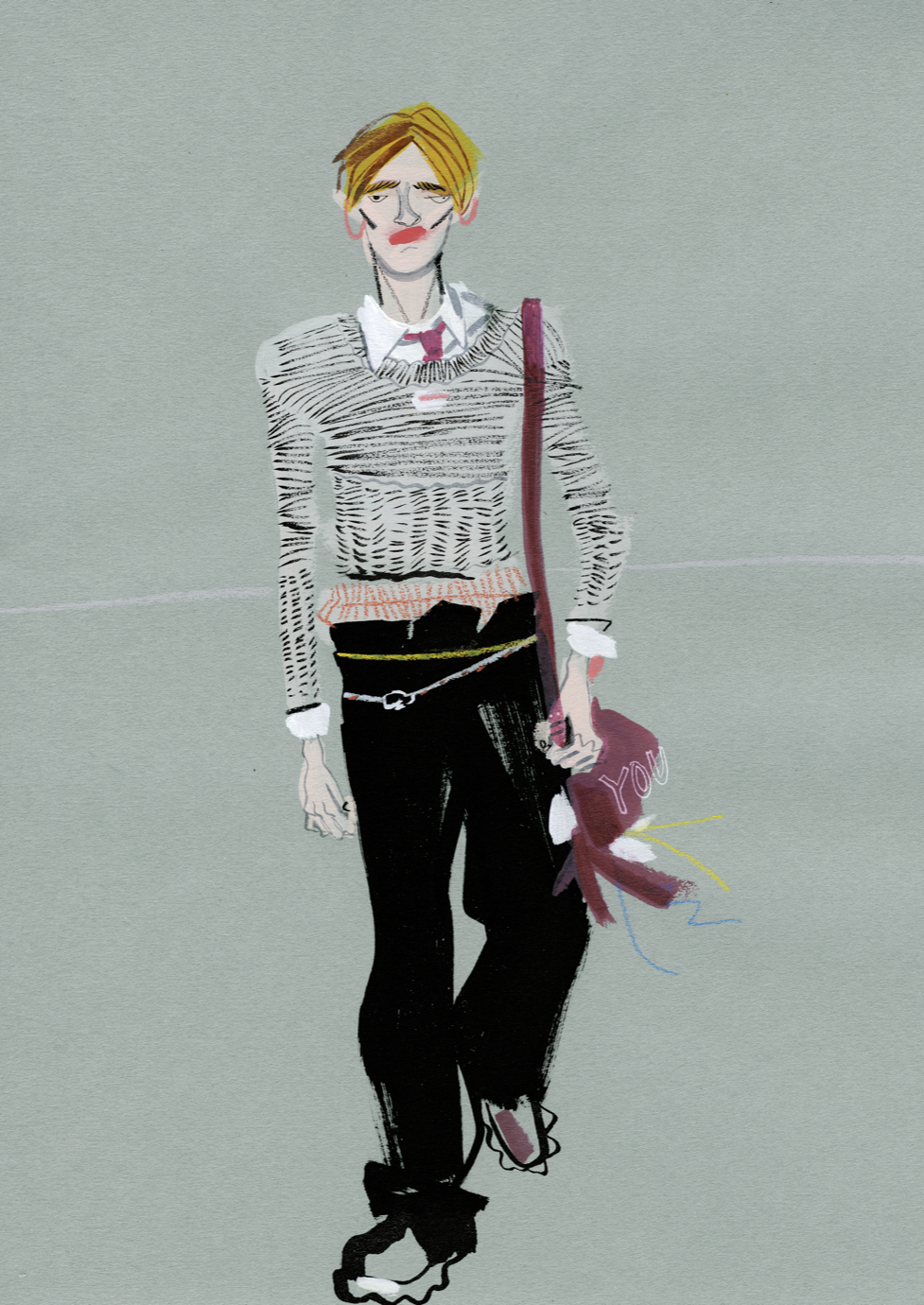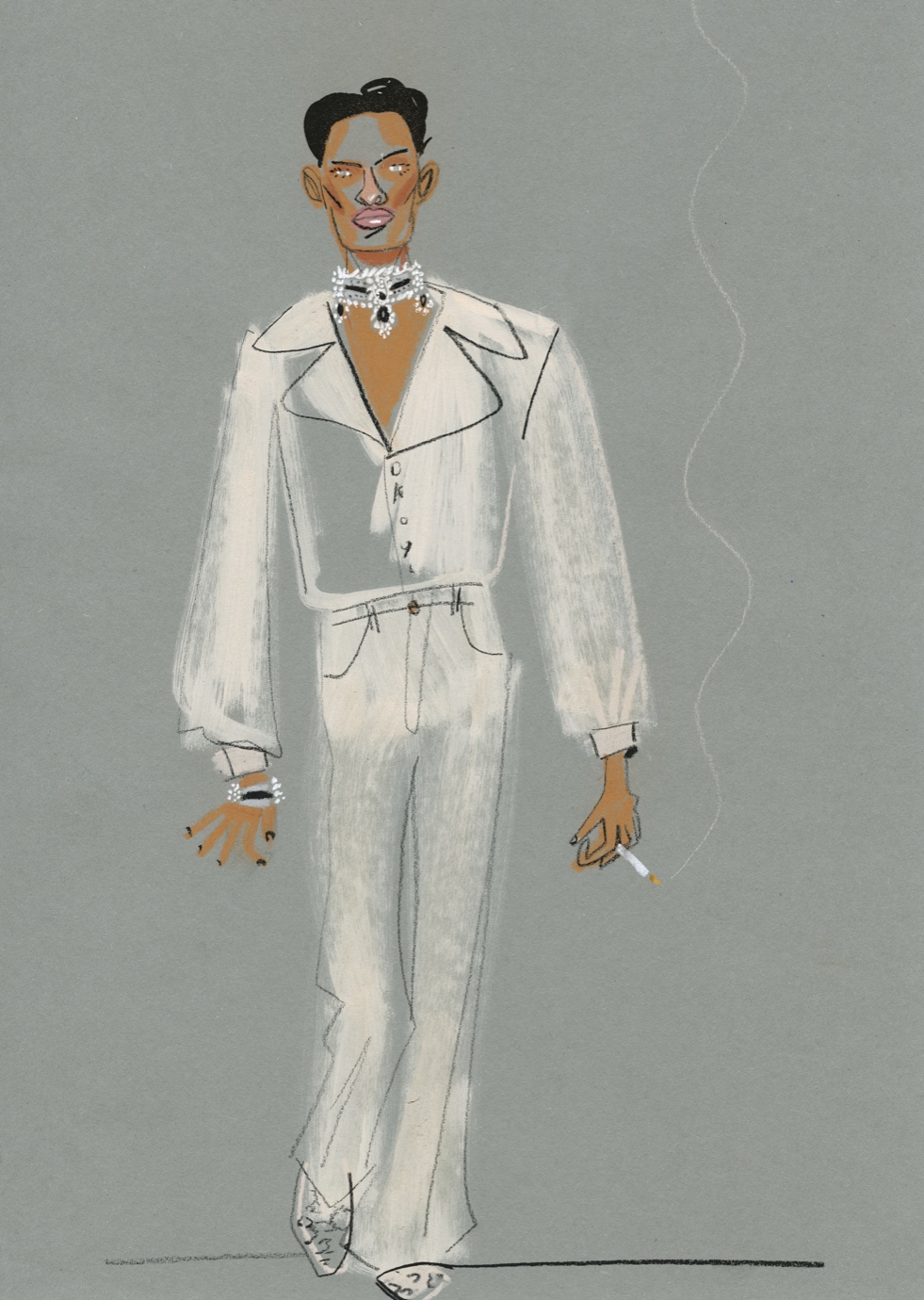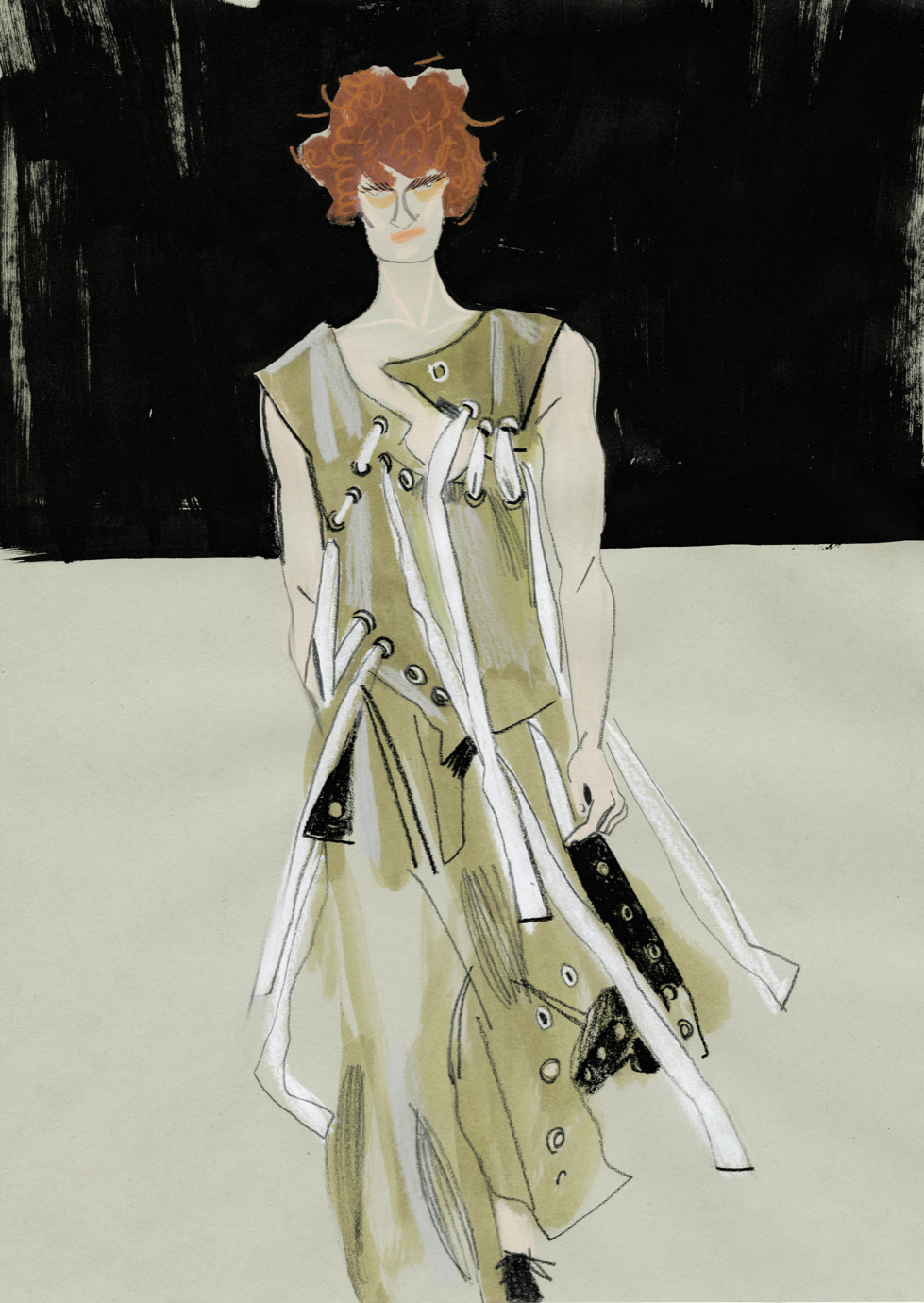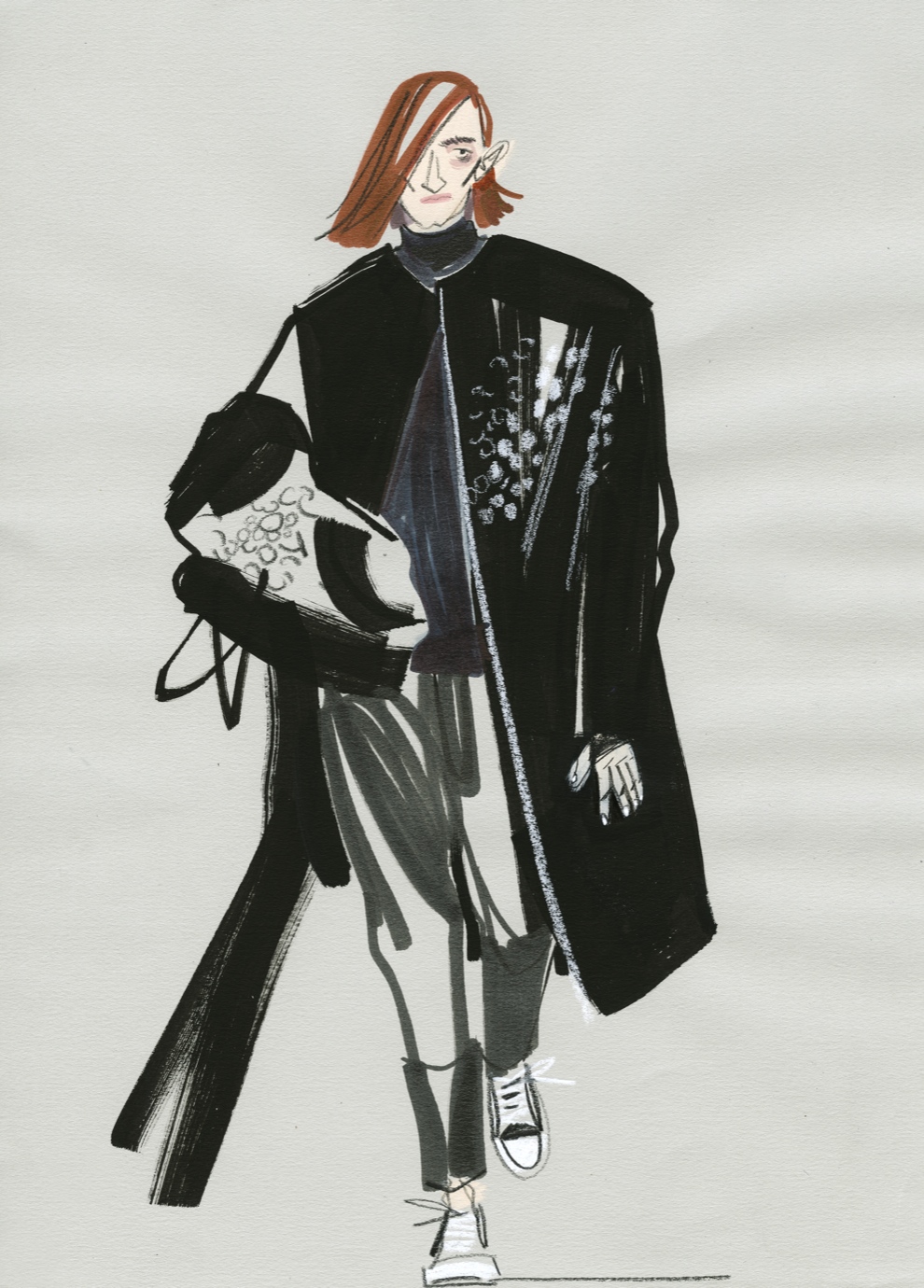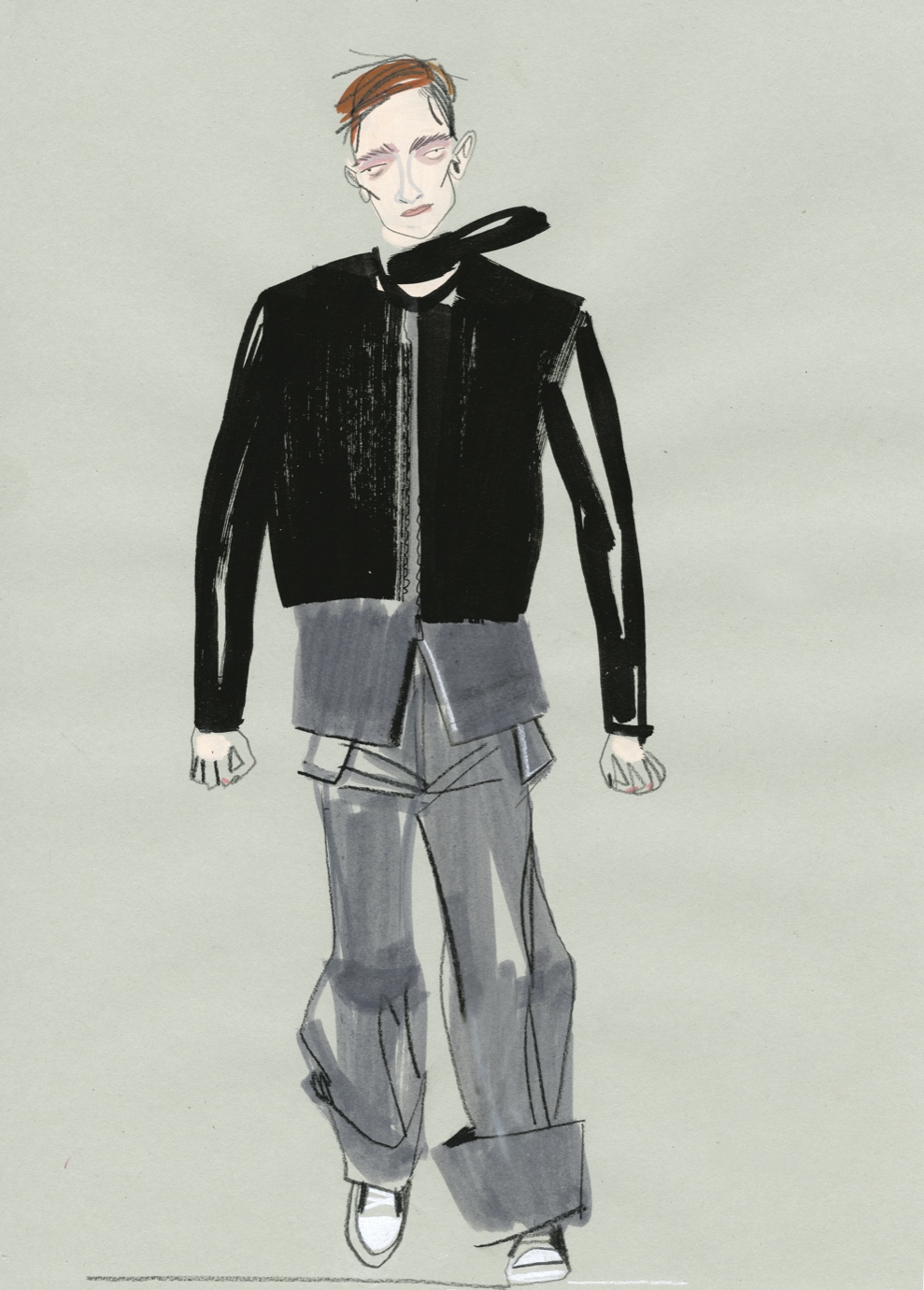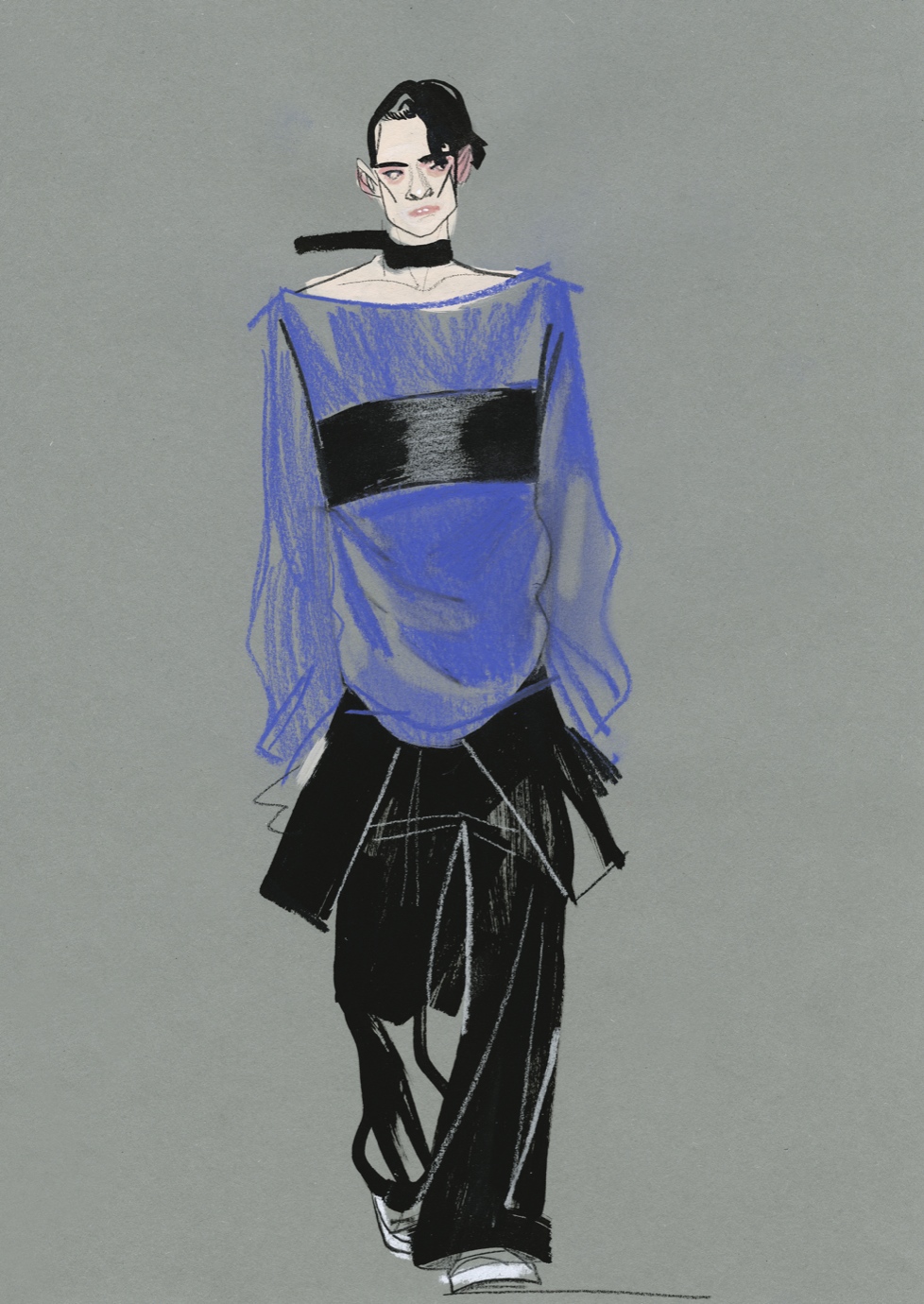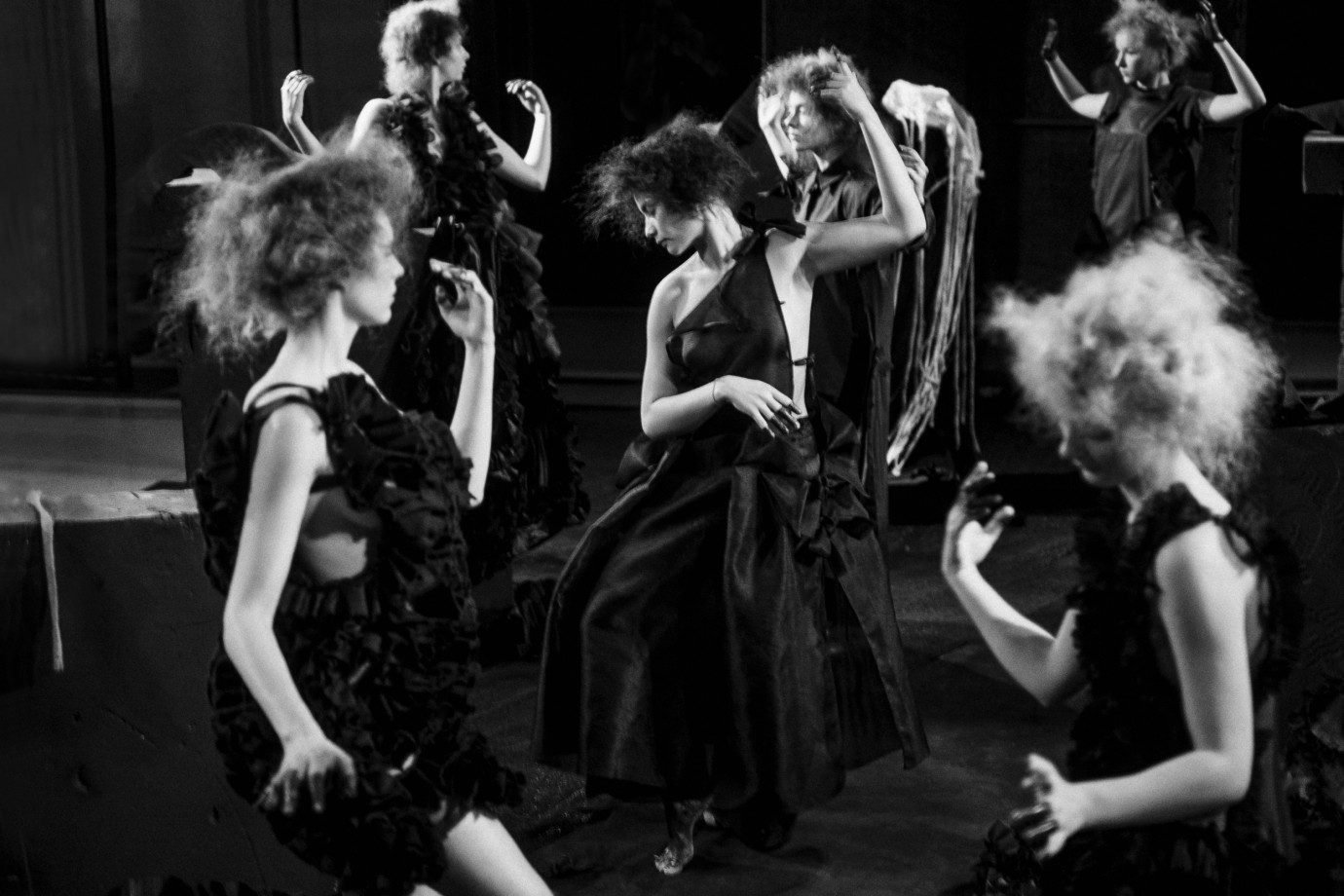Amid all of the post-show frenzy backstage, where well established journalists such as Tim Blanks and Lou Stoppard got a head first into the Q&A process, friends and family urging in to congratulate their loved ones, some models rushing to get changed whilst some loitered around for their share of prosecco, we managed to get the chance to speak with the designers – some more briefly than the others.
 J.W. Anderson illustrated by Masha Reva
J.W. Anderson illustrated by Masha Reva
CHARLES JEFFREY
Clad in a beret and a grey pin-stripe suit with a Johnny Rotten t-shirt underneath, Charles (who founded club night Loverboy) manifested his talent in multi-tasking between responding to a journalist whilst blowing kisses and waving goodbye to friends of his.
What role does Loverboy play in informing your work?
Well, Loverboy is a laboratory for the work. The artwork that we do for it kind of informs the prints, the colours; the people who exist in that space are essentially my primary research. The previous collections have all been photographed by ourselves: the clothes, how we wear it… All those small quirks are things that we end up applying onto the garments afterwards.
Were there any challenges you had leading up to the show?
The obvious ones are things like existing in London and trying to be creative. Actually, I find this collection a bit more of a breeze, because I really had a great team of people helping me. I had a pattern cutter and a seamstress — people who are absolutely amazing. They really helped me to realise things that I was maybe not so confident in doing myself. My confidence level with pattern cutting is quite low, so the fact that I was able to realise a lot of shapes quite quickly, because of all these people, made things a hell of alot easier for me!
What advice would you give to graduates who are thinking of (or about to) presenting their first show?
Focusing on knowing what they like and what they’re good at, and being able to hone in on that. In terms of presentation: using that same process to inform it. If you like things really neat and tidy, then concentrate on that and indulge in it. If you like things messy and crude, like I do, then indulge in that!

